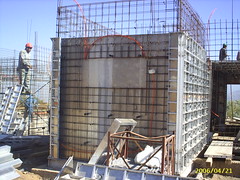Thanks to everyone who offered encouragement yesterday! And now, oh frabjous day! We’re starting our latest series of website reviews by me, Jordan McCollum, of here and Marketing Pilgrim, and Kathleen MacIver of KatieDid Design—today with C. Michelle Jefferies’s website.

Kathleen’s comments
Dear Ms. Jefferies,
I like this site! It clearly portrays the idea of stories and words, and the use of quotes establishes the genre, to a small extent. Your navigation is also clear and easy to follow.
Here are some suggestions that might help bring your site to life just a bit more:
- If you want to improve your site, I would try to add just a bit more color, perhaps, just to make the site not feel so cold.
- The Japanese/Chinese (I’m not sure which) characters effective hint at the genre, but it might be nice to know a little more. Are these YA? Adult? Romance? Adventure? Children’s? If you can find a way to portray that so your visitors can know if the first 3-5 seconds on your site (without looking for it), that might help.
- However, the “hit man” quote on the top of the Why Butterflies page didn’t fit the whole idea of Asian fantasy that I got from the front. That leads me to think that my Asian fantasy perception is not accurate…which means that you DO need to clarify your genre better.
- How about a great author photo? 🙂
- Your My Books page is hard to follow. Some paragraph breaks dividing each book and series would help. Some book covers would be great as well.
- Your Why Butterflies page confused me. Also, at the bottom you have the word, “Meramorphosis.” Is this a word I don’t know, or a typo?
I hope this helps, and God bless!
—Kathleen MacIver, KatieDid Design
Jordan’s comments
Hi Michelle! I do like your site design (though I’d like the gradient background on the right to repeat down the length of the page).
As always, I recommend getting a domain of your own, and putting your Blogger blog and website on that domain. Both michellejefferies.com and cmichellejefferies.com are both currently available—I’d tend toward the one without an initial since it’s that much easier to remember and get it right. But either are better than your current URL—all people would have to do is remember your name, not your name and a domain.
Search engine presence
Now, I do assume that many people won’t remember your first initial when searching for your name. Without the C, there is some  competition for your name, and Bing can’t find you at all (not terribly surprising). Google ranks your site as #5 and your blog as 8 (your Twitter profile is between those). Yahoo ranks your blog as #1 and your site at the 8th and 9th positions.
competition for your name, and Bing can’t find you at all (not terribly surprising). Google ranks your site as #5 and your blog as 8 (your Twitter profile is between those). Yahoo ranks your blog as #1 and your site at the 8th and 9th positions.
Now, with the C, your presence is better. Google and Yahoo have your blog and your site in the top 3. Even Bing finds your blog—putting it in the #3 and 4 slots. Other relevant results include your Twitter, Facebook and Listorious profiles.
This shows that you could probably work some more to build links to your blog and especially your site, but you have a decent start.
Pages
I agree with Kathleen on your My Books page—your site could be working harder to show off your works and your writing. The list of titles and statuses doesn’t tell us a whole lot  about the stories you’re writing. I agree that book covers will liven the page up (although I think designing one’s own covers for an unpublished site is hokey, I did it because a page of text is boring).
about the stories you’re writing. I agree that book covers will liven the page up (although I think designing one’s own covers for an unpublished site is hokey, I did it because a page of text is boring).
I also agree that a paragraph format would be helpful—but with that many WIPs, it could easily be overwhelming. In fact, it already is—fifteen novels in various stages of planning, writing and revising is simply too many for most people to wrap their heads around.
I think the best strategy would be to select the best works—the ones you’re actively pursuing publication on now, plus a few to show depth—to give a quick summary of and put together mock covers for. Also, while you have a very short excerpt on the front page, I think adding one or two short (up to 5-7 MS page) excerpts from your edited and polished works (on separate sub-pages) would let visitors get an even better taste of your works.
On your Biography page, I would add your awards. You use “Award winning author” as your tagline, but you only have an award mention buried in the My Books page. I would recommend highlighting that award prominently in your Biography page. That award will set you apart for readers and more importantly publishers. Finally, as always, I recommend adding some more social networking info—promoting at least your Twitter profile (probably on the Blog & Email page, which you might then rename Blog & Contact).
We hope that helps!
What do you think? How does your site highlight your works and your writing?
Photo credit: highlight&dmash;Daniël Cohen




